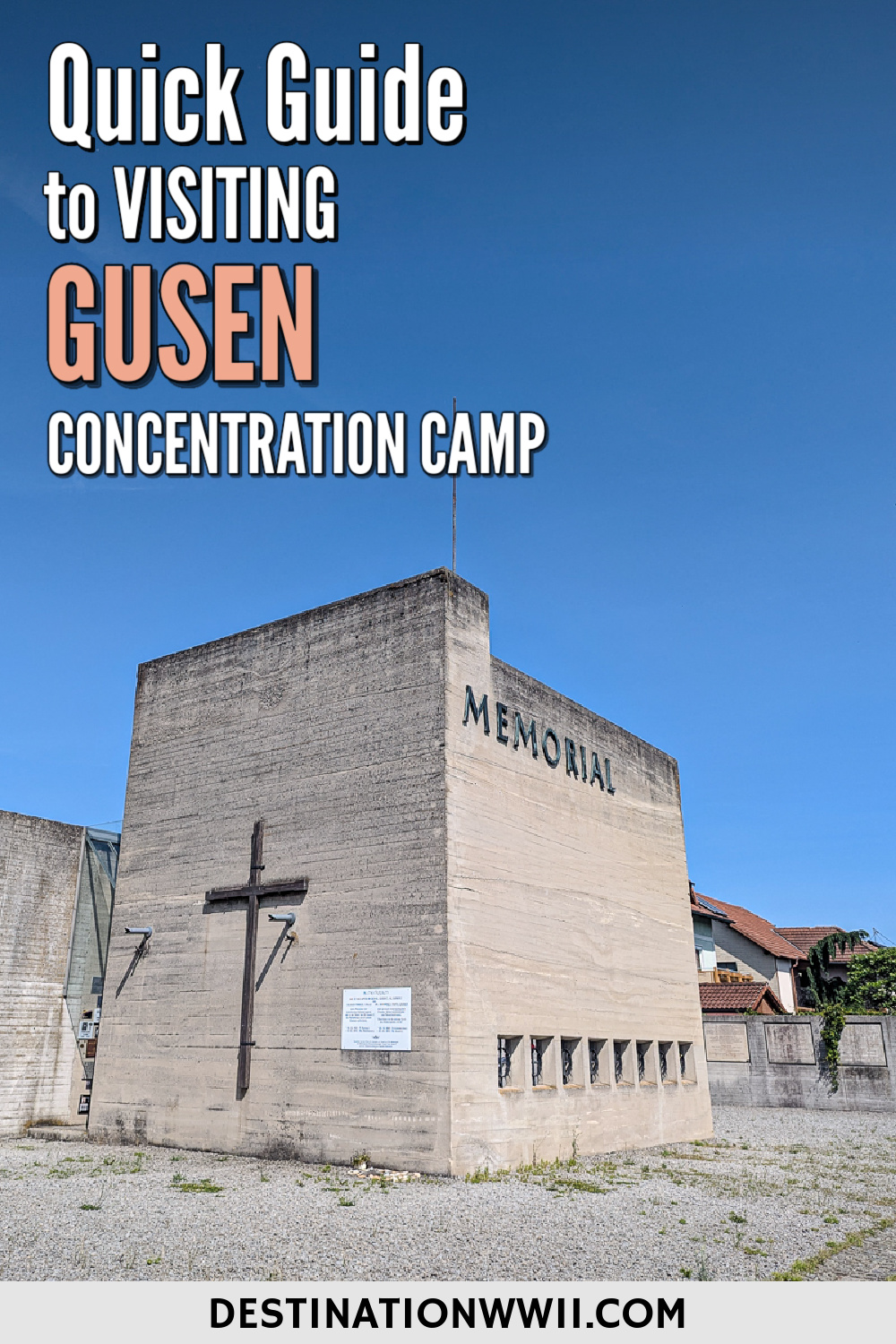Visiting Gusen concentration camp memorial site won’t take you very long since not much of it remains, but it will be a seriously eye-opening experience regardless. I saw some things here I’ll never be able to unsee and left with several unanswered questions, and I’m sure you’ll agree.
This guide will tell you everything you need to know to visit Gusen on your own–one of the most brutal subcamps of Mauthausen.
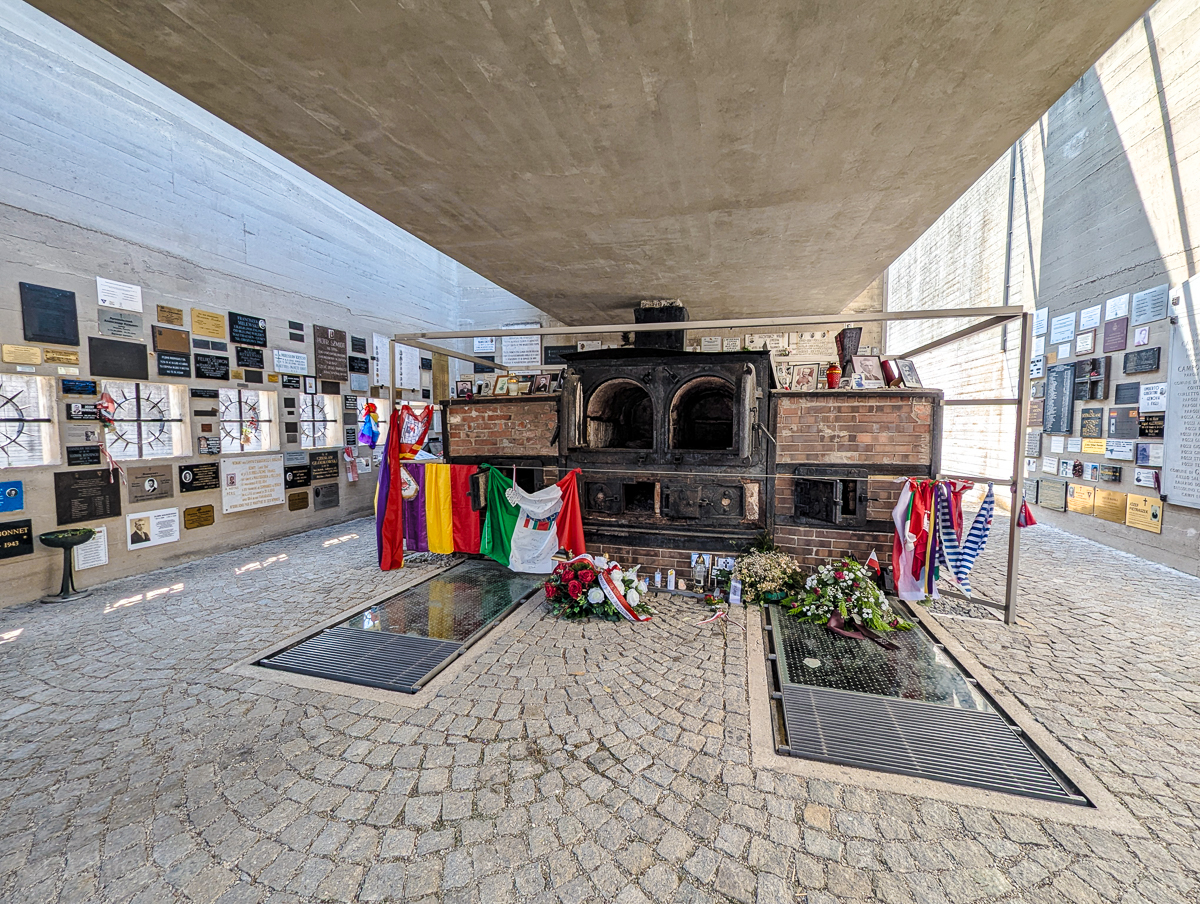
What is Gusen?
Gusen was a Nazi concentration camp opened in May 1940 as a branch of the Mauthausen Concentration Camp just a few miles away. Though concentration camps in general had originally been built to house political prisoners, by 1938 they had taken on a new purpose–to exploit prison labor for profit.
During the five years of its existence (1940-1945), the SS imprisoned around 71,000 people at Gusen. Of that, 36,000 of them died here.
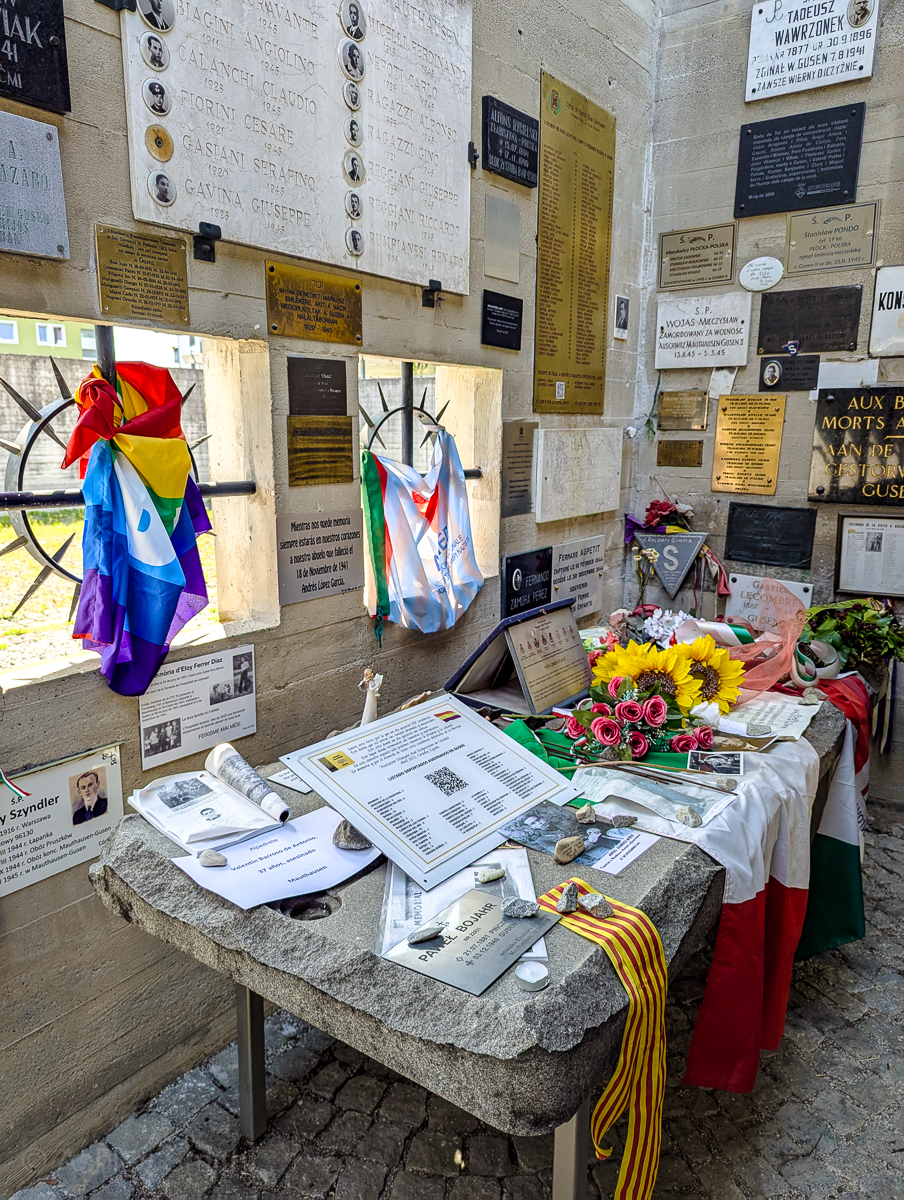
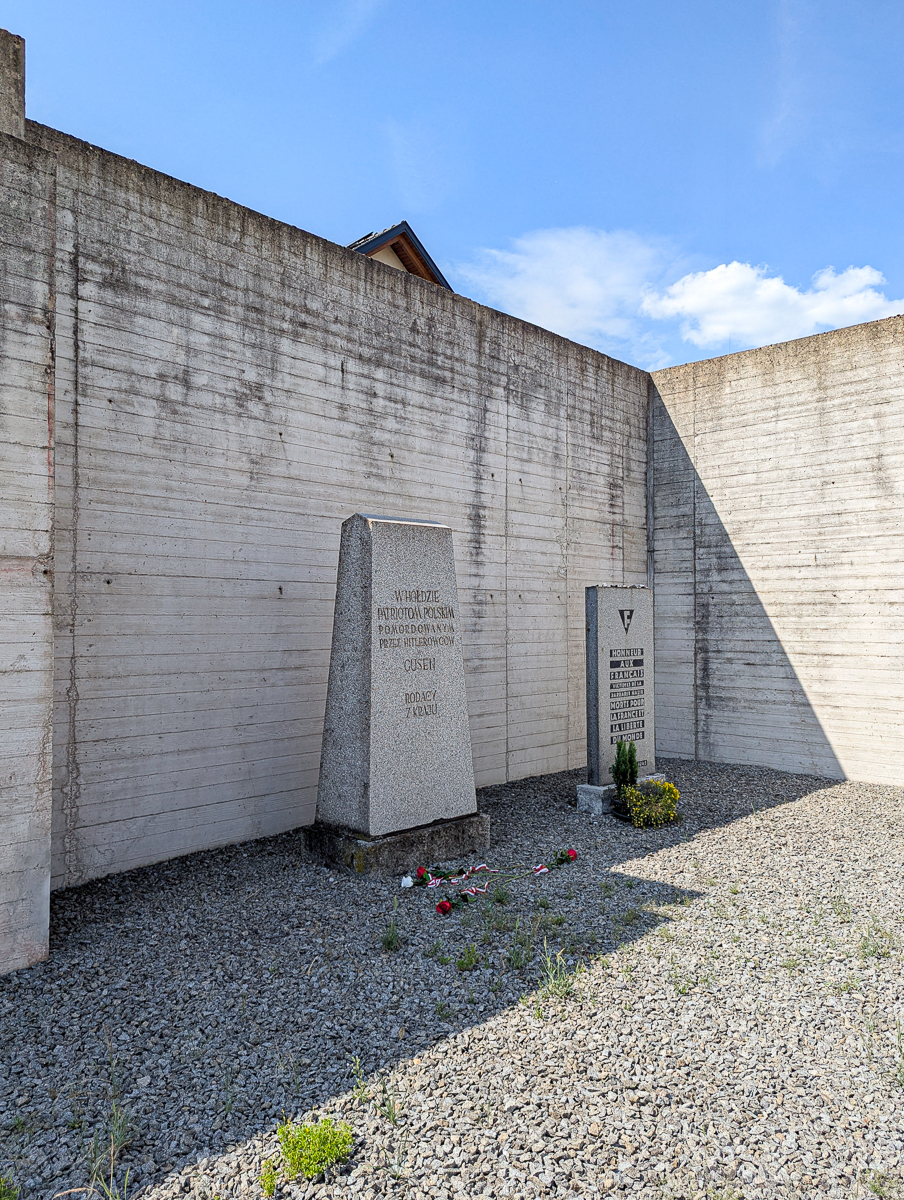
Gusen as a slave labor camp
The locations of both Mauthausen and Gusen were chosen due to their proximities to nearby granite quarries. These, and other camps like Flossenbürg in Germany, were entirely established as for-profit economic enterprises by privately-owned companies. Their purpose was to extract granite blocks for use in Hitler’s massive construction projects as part of the SS-owned German Earth and Stone Works Company.
By 1943, the SS was using Gusen prisoners to also work in the armaments production facilities, concentrating on things like rifles. After the Allies bombed the Messerschmitt factory in Regensburg in 1943, the factory moved to Gusen where camp prisoners worked producing airplane parts.
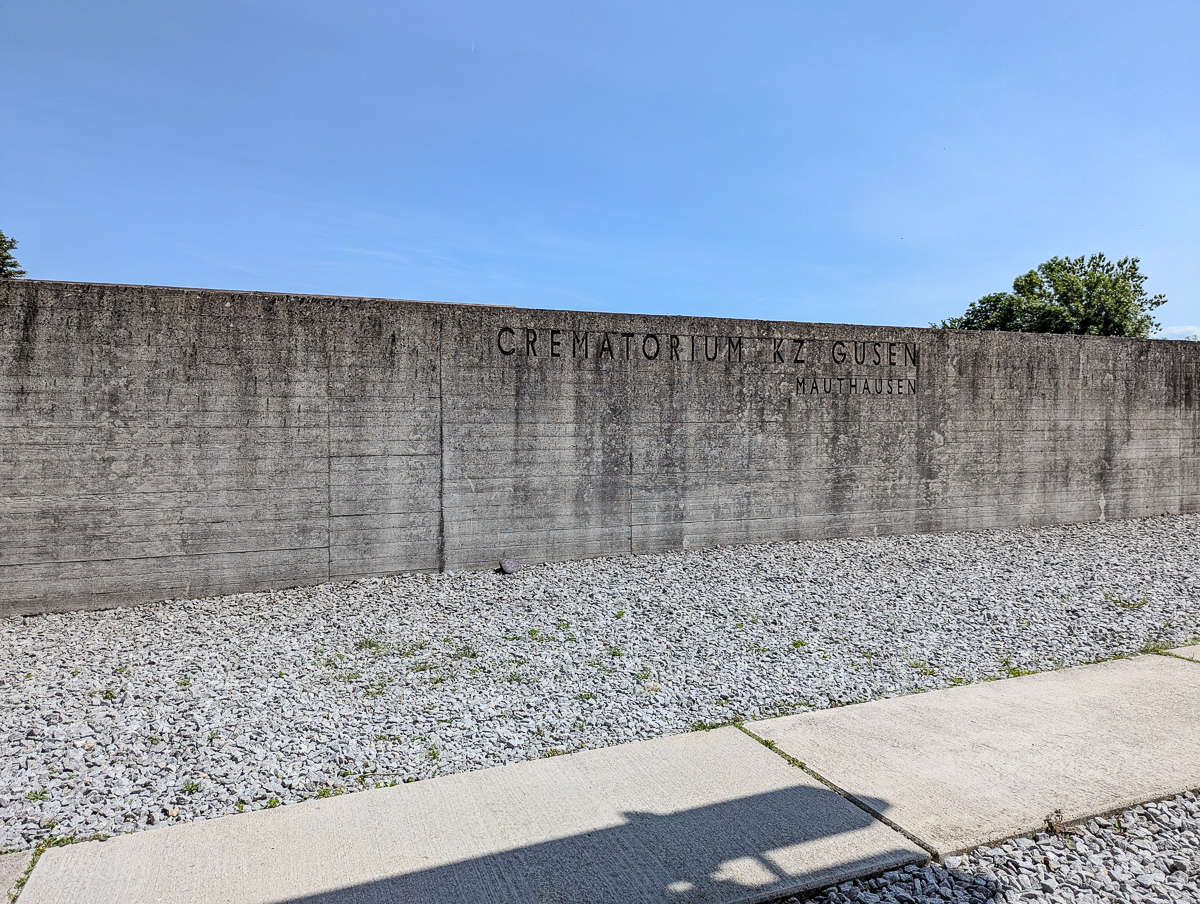
Gusen as a death camp
Gusen concentration camp had an alarmingly high death rate; the expected survival rate here was just six months. Besides the back-breaking work and exhaustion suffered in the quarries, prisoners were routinely beaten, starved, exposed to diseases, deprived of medical care, subjected to medical experiments, and outright murdered. The SS sent the prisoners who were too weak or sick to work the quarries to the Hartheim euthanasia facility to be gassed.
Between the years of 1940-1942, Mauthausen and its partner camp Gusen were considered the deadliest camps in the entire concentration camp network. In 1941 alone, the death rate at Gusen was several times higher than that of Mauthausen, a much larger camp.
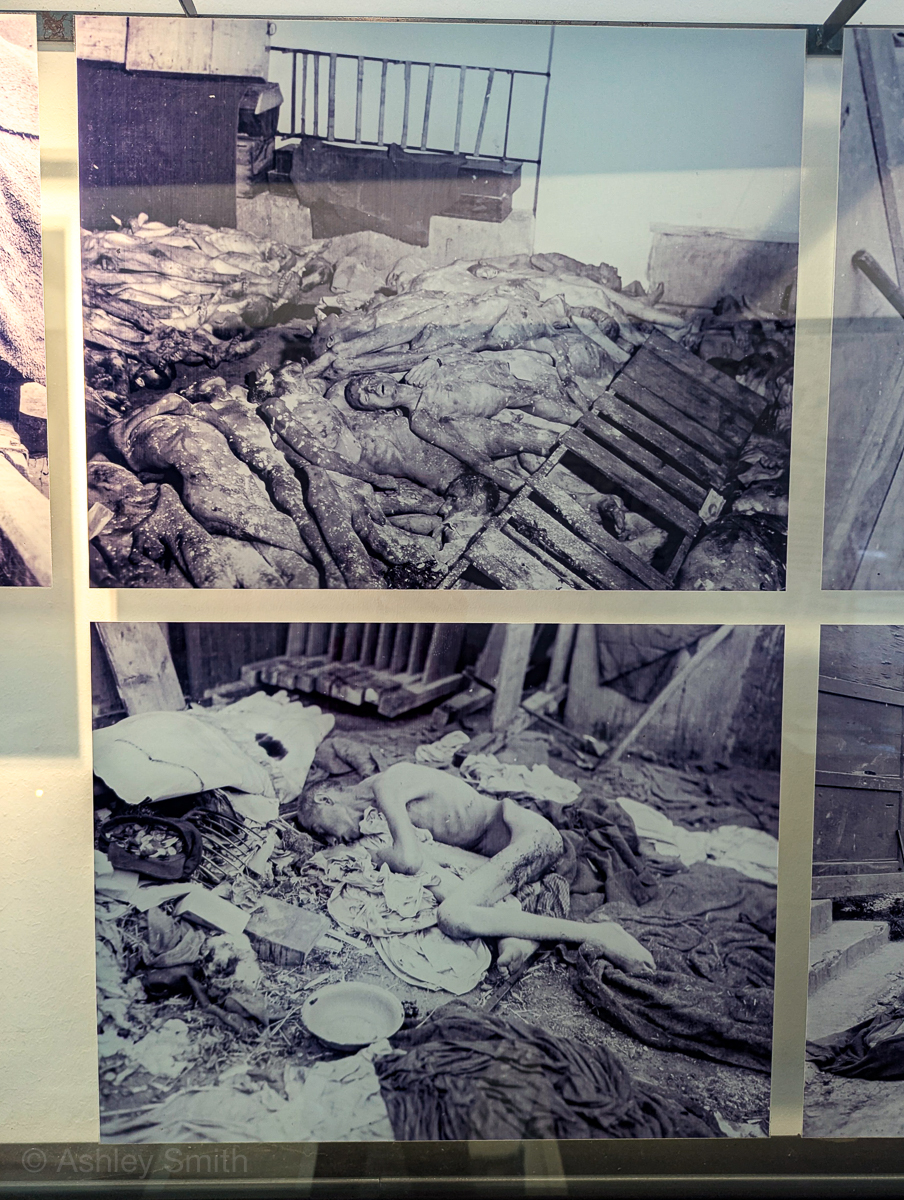
Gusen’s liberation
As a branch of the Mauthausen camp, the US Third Army also liberated Gusen on May 5, 1945. At the time, there were around 20,000 prisoners still in the camp, many of whom died shortly after liberation due to their severe illness and malnourishment.
Gusen after liberation
In order to thwart the spread of disease, the US Army burned down much of the remaining camp. What was left was largely sold off or looted for parts. They buried the remaining dead in the cemeteries at Mauthausen.
Because the camp was located in the Soviet occupation zone, the Soviet Union took control of it shortly after liberation. In 1955, the Soviets withdrew their troops from the area and the former Gusen camp was purchased by a group of former prisoners under the condition that it be turned into a memorial site. The memorial at Gusen was inaugurated in May 1965.
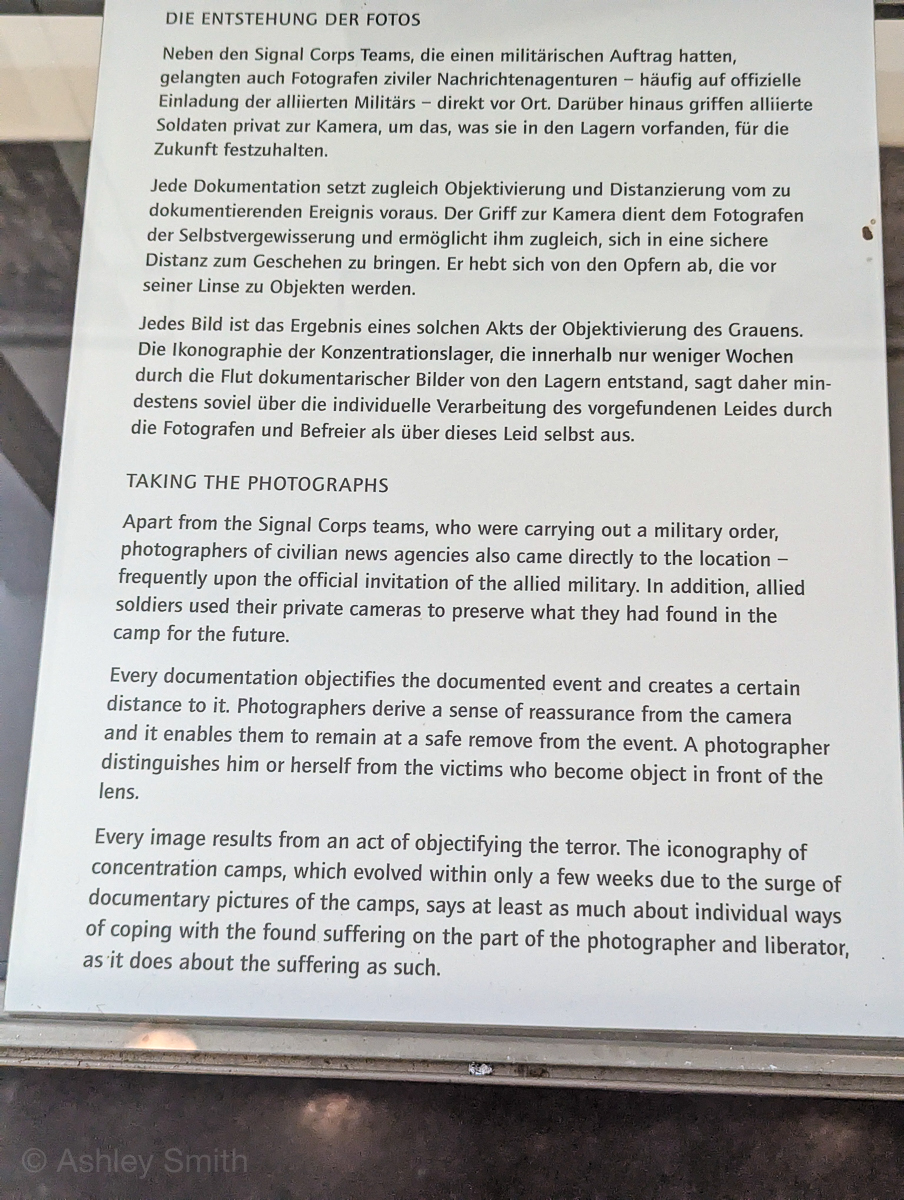
Where is Gusen Concentration Camp?
The Gusen concentration camp memorial site is located Gusen/Langenstein, Austria, just a short drive from both Mauthausen Concentration Camp and the city of Linz.
How to get to Gusen
Gusen is somewhat centrally located close to several major cities. As such, the easiest way to get here is by car. When I visited in June 2025, I drove here from Linz where I was already staying. (Rent a car here if you need to.) If you’ll be coming from the memorial at Mauthausen, Gusen is just a 6-minute drive. Otherwise:
GPS address: Georgestraße 7, Langenstein, Austria
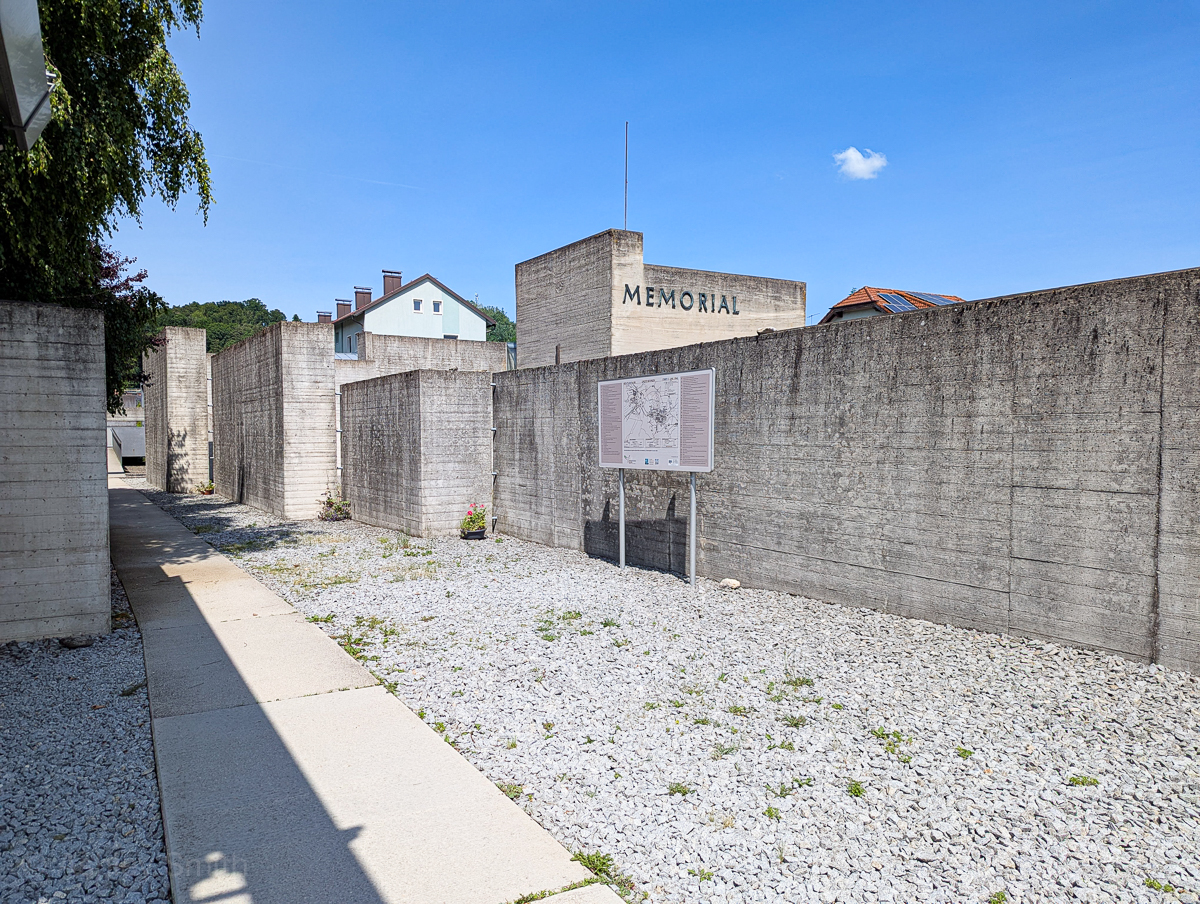
Where to park at Gusen
Once here, there’s a small, free parking lot outside the entrance to the memorial site. Just pull into the site off the main road and park in the small gravel lot.
Getting to Mauthausen by public transportation
If you’ll be coming from Mauthausen, your best bet would be to call a taxi. Other than a 1-hour walk between the sites, there really isn’t another way to get here without a car or bicycle.
If you don’t have your own rental car, and aren’t planning to visit Mauthausen, you can still get here by train or bus. You can take the train to the St. Georgen/Gusen Railway Station. From here, you can either walk the 2.3km to the site or take a taxi.
From March to November, you also have the option of taking a bus here directly from Linz. Bus line 362 leaves from the Linz bus terminal and goes to the Gusen Bachstraße (Gusen Memorial) several times a day.
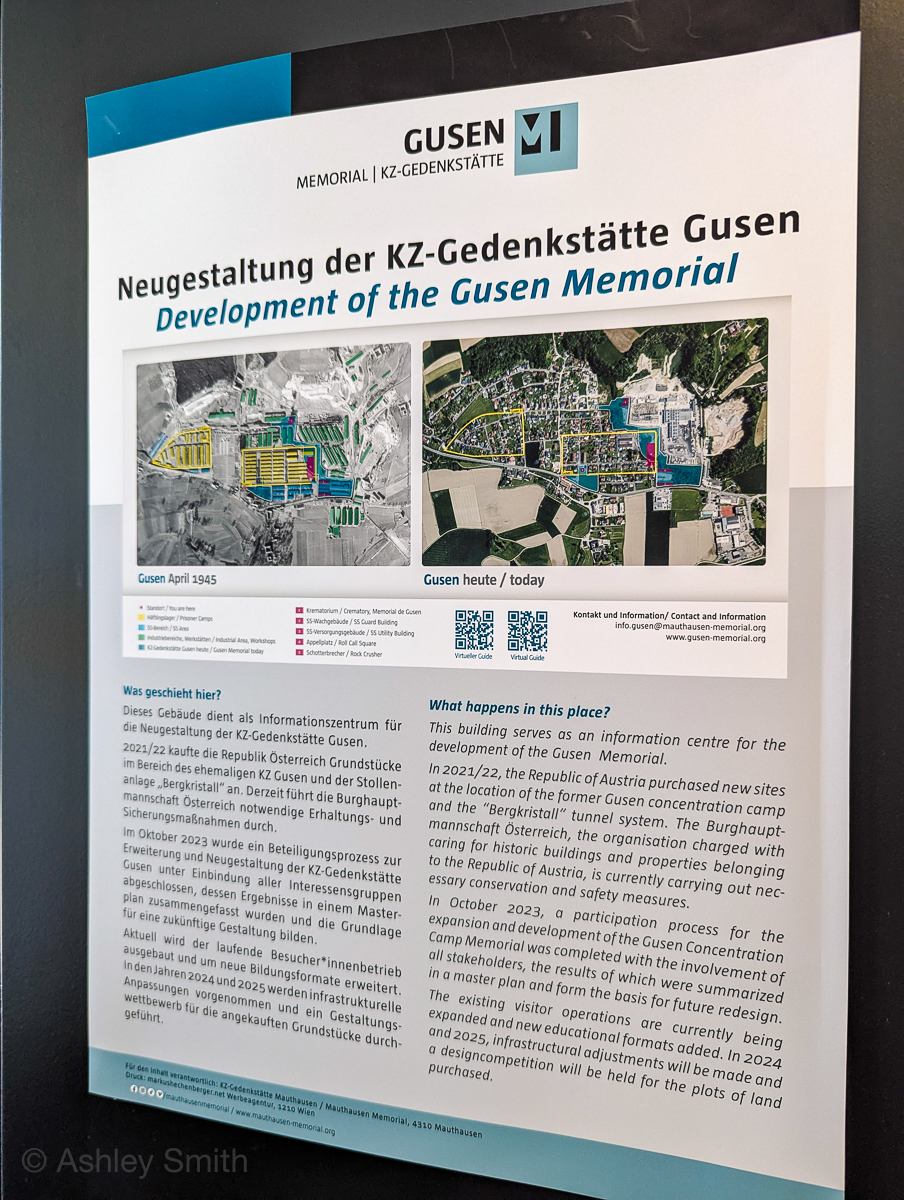
What to see at Gusen Concentration Camp
Though most of the camp’s original structures were destroyed after the war, there are still a few worthwhile things to see here. First, you’ll be able to explore the visitor center. In here you’ll find Gusen’s memorial museum and permanent exhibition all about the camp’s history and prisoners.
Gusen museum
In the center of the museum are some of the unearthed remains of the camp. Different parts of the camp are continuously being discovered in this area, and you’ll be able to see some active restoration projects going on.
There are tons of photographs and historical information in this exhibition, many of which were the most horrifying accounts of concentration camp life I’ve ever seen. Please don’t rush through here. Really take the time to examine each one of them.
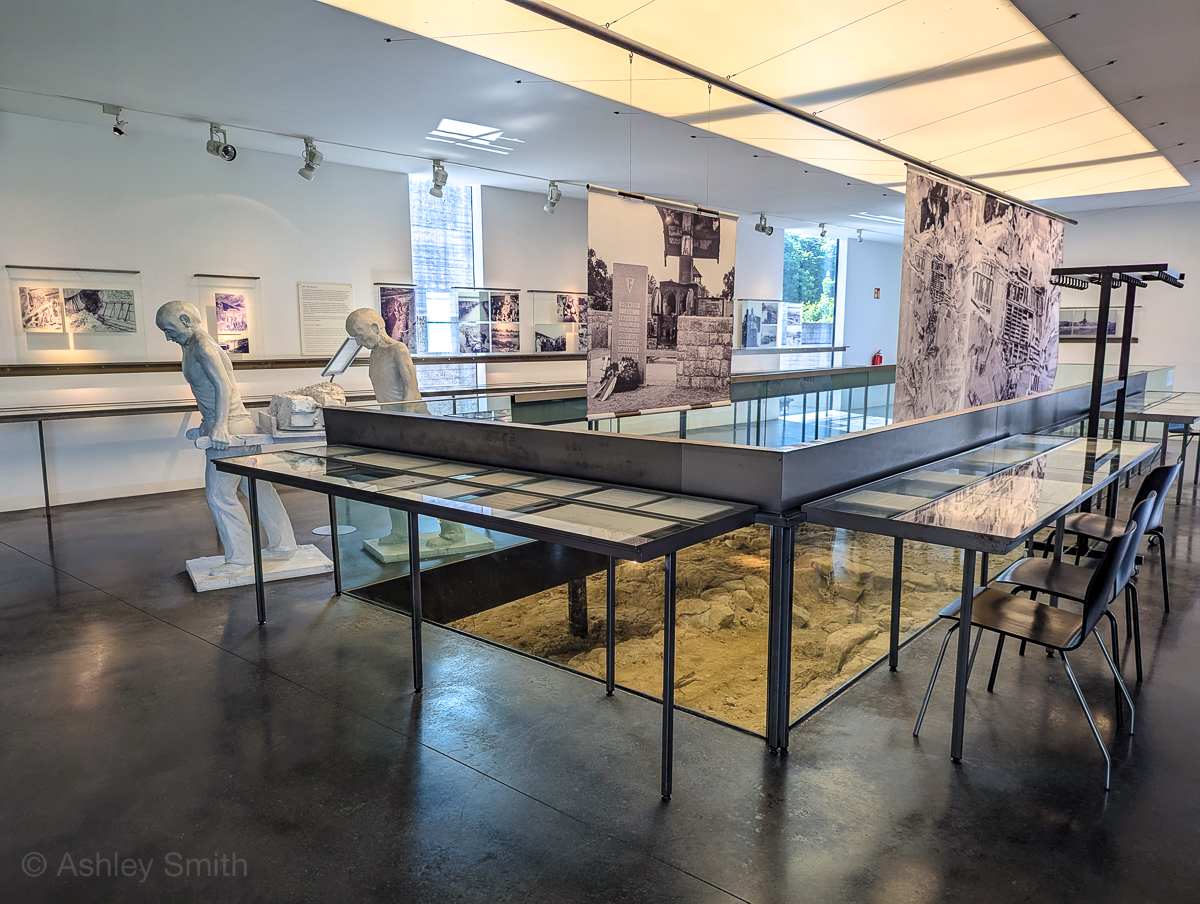
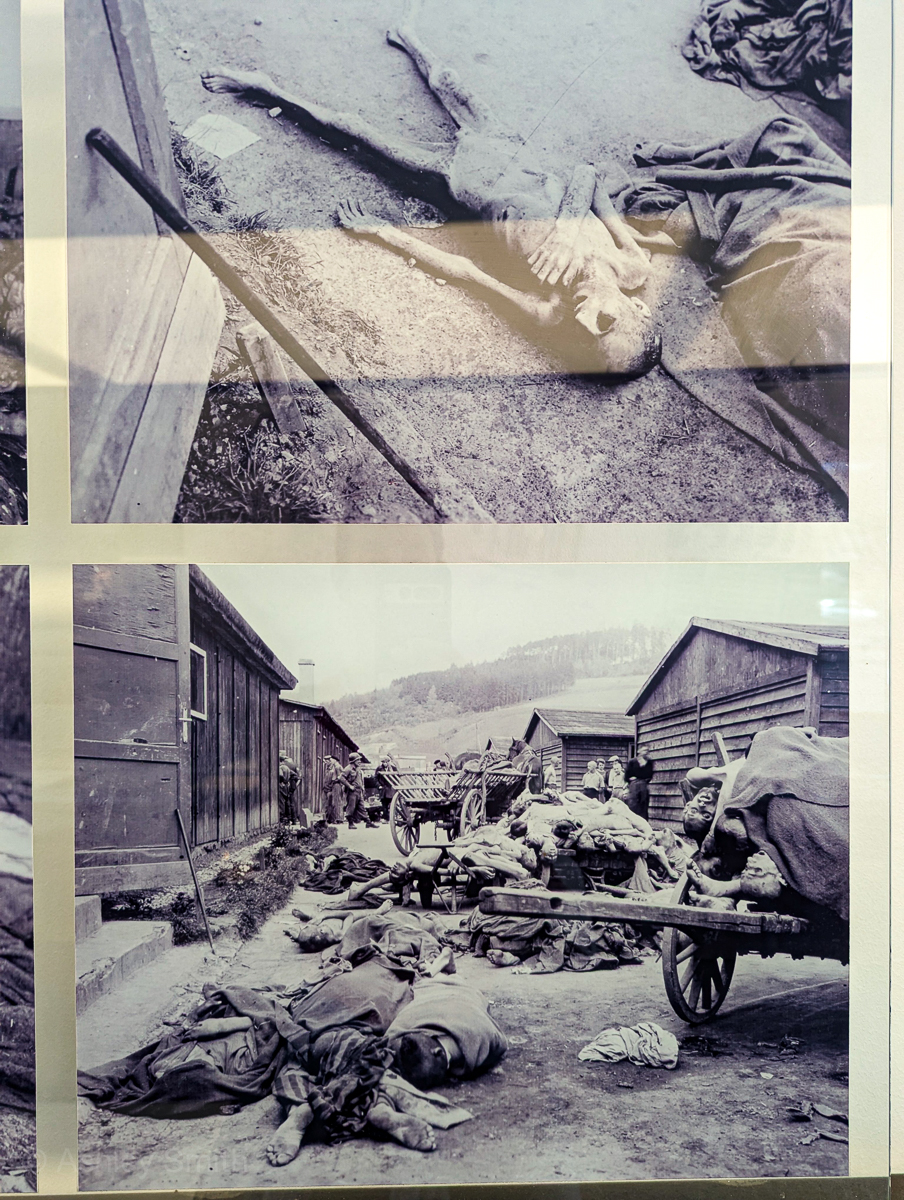
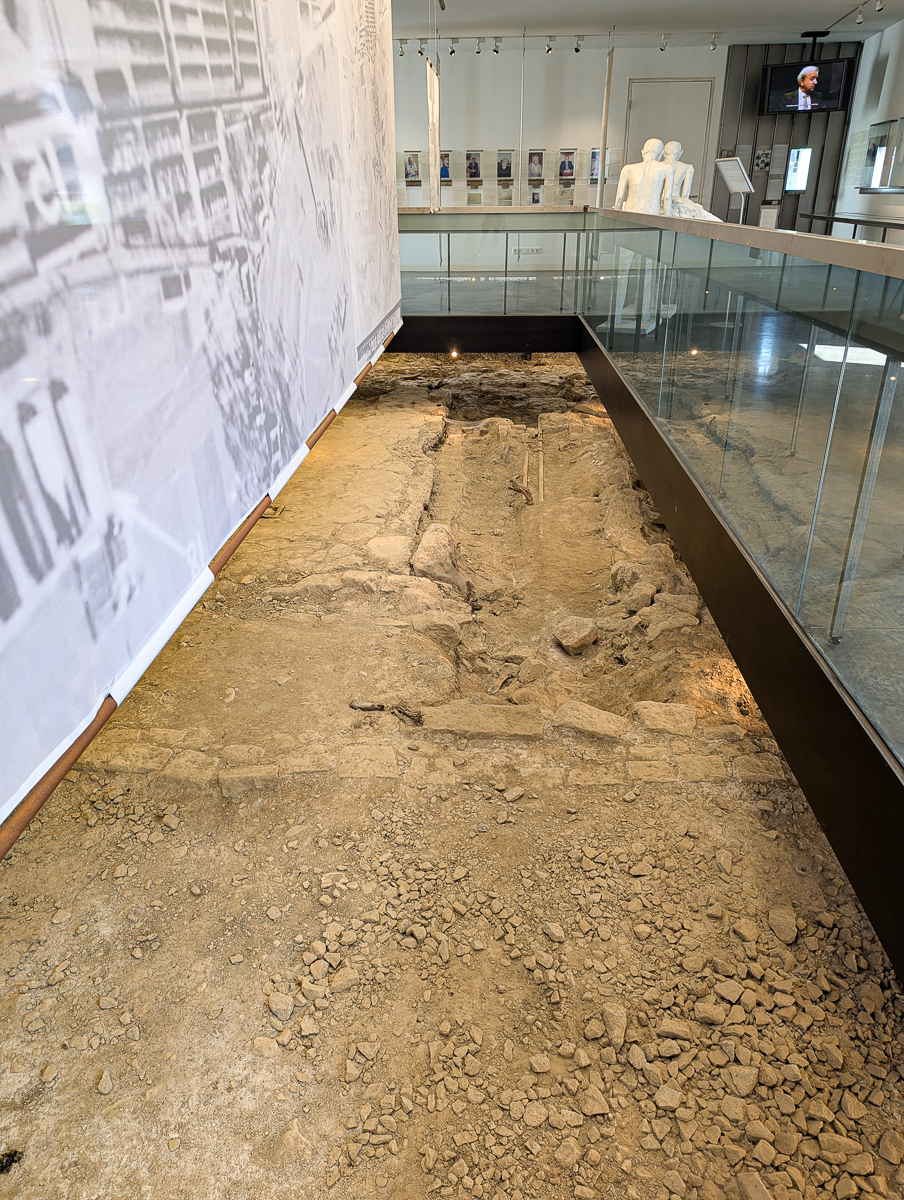
Gusen memorial site
From here, you’ll be able to explore the Gusen memorial which includes the original incinerator that was used to burn the 36,000 bodies of those who died in Gusen. The camp’s crematorium was dismantled after the war, but the oven remained as a sort of memorial. The memorial space you’ll visit today was built around it.
Another thing to take note of here is how close all the houses are to this structure. Some peoples’ balconies literally look out over this makeshift crematorium. I hope they got a great deal on that property.
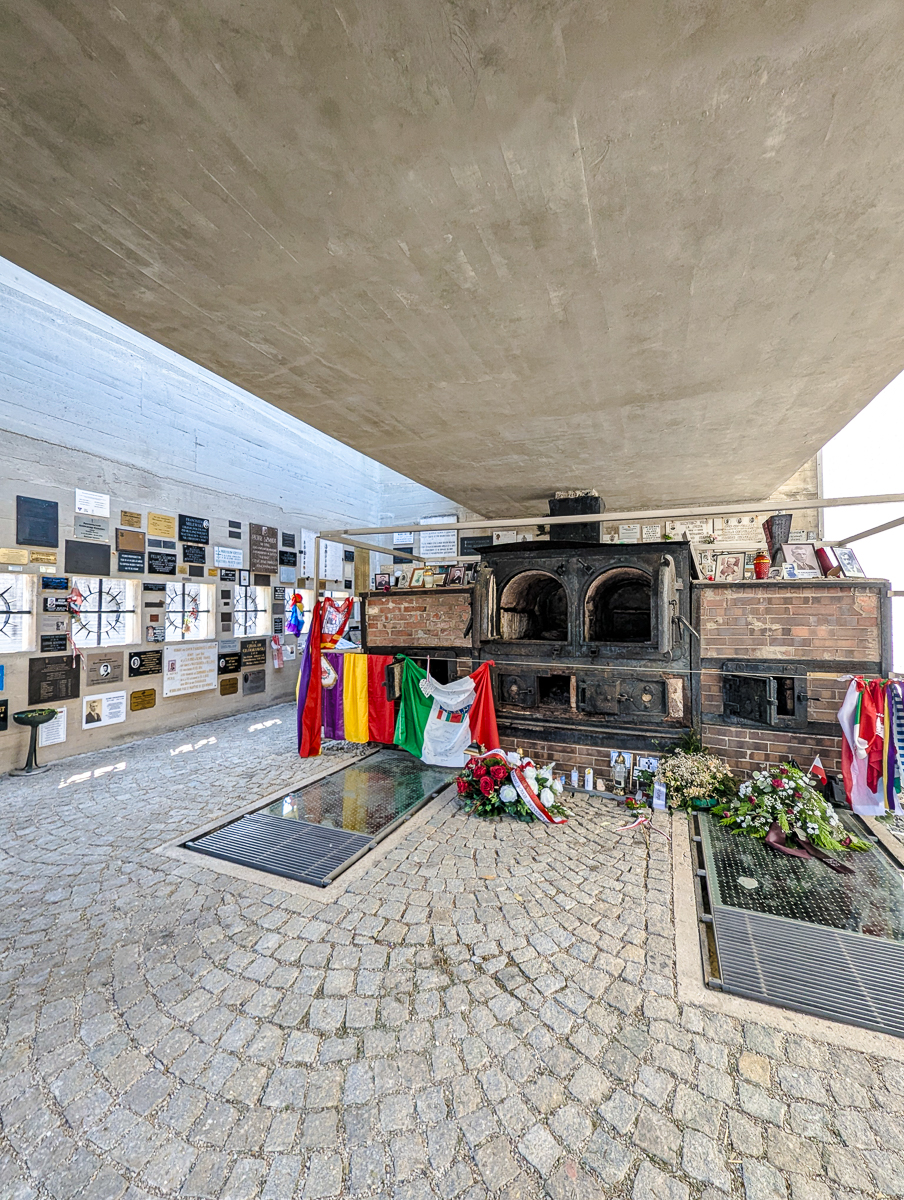
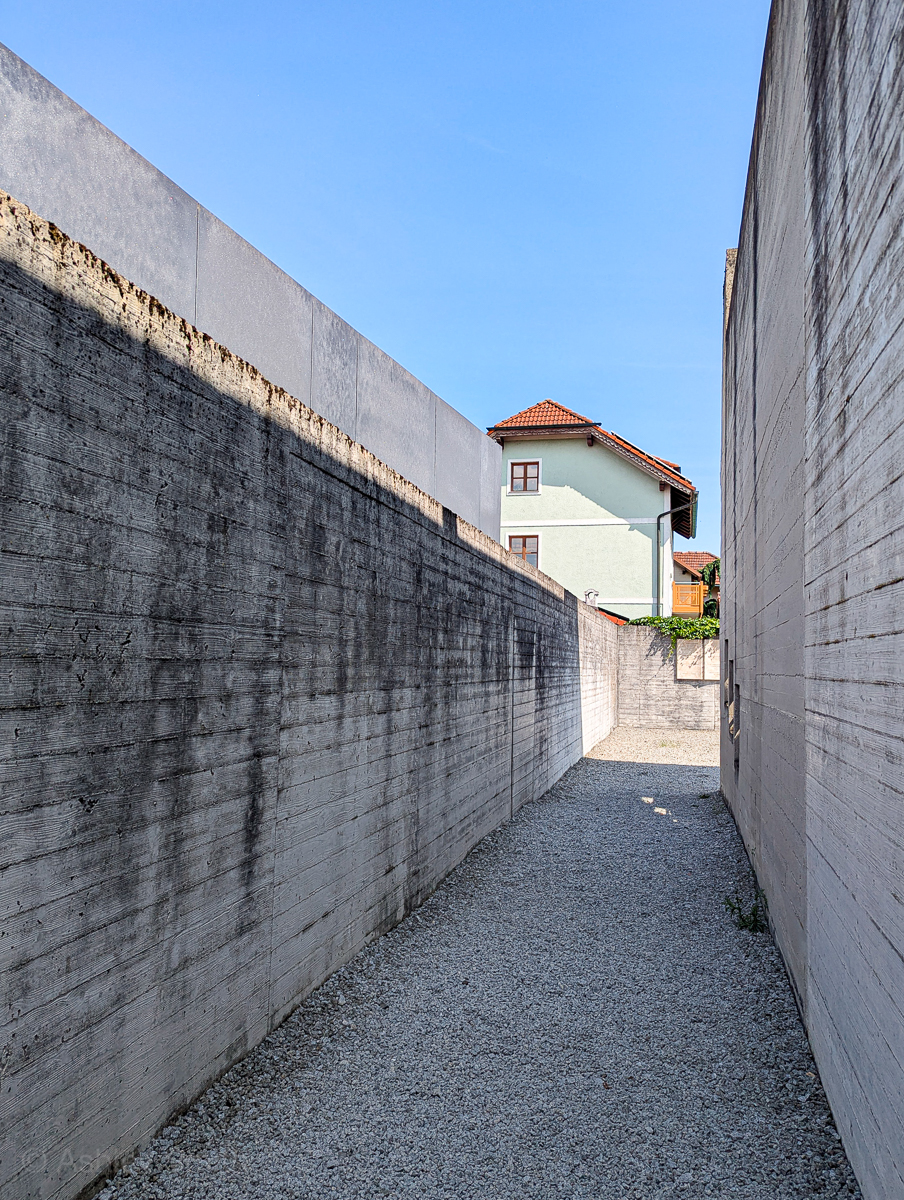
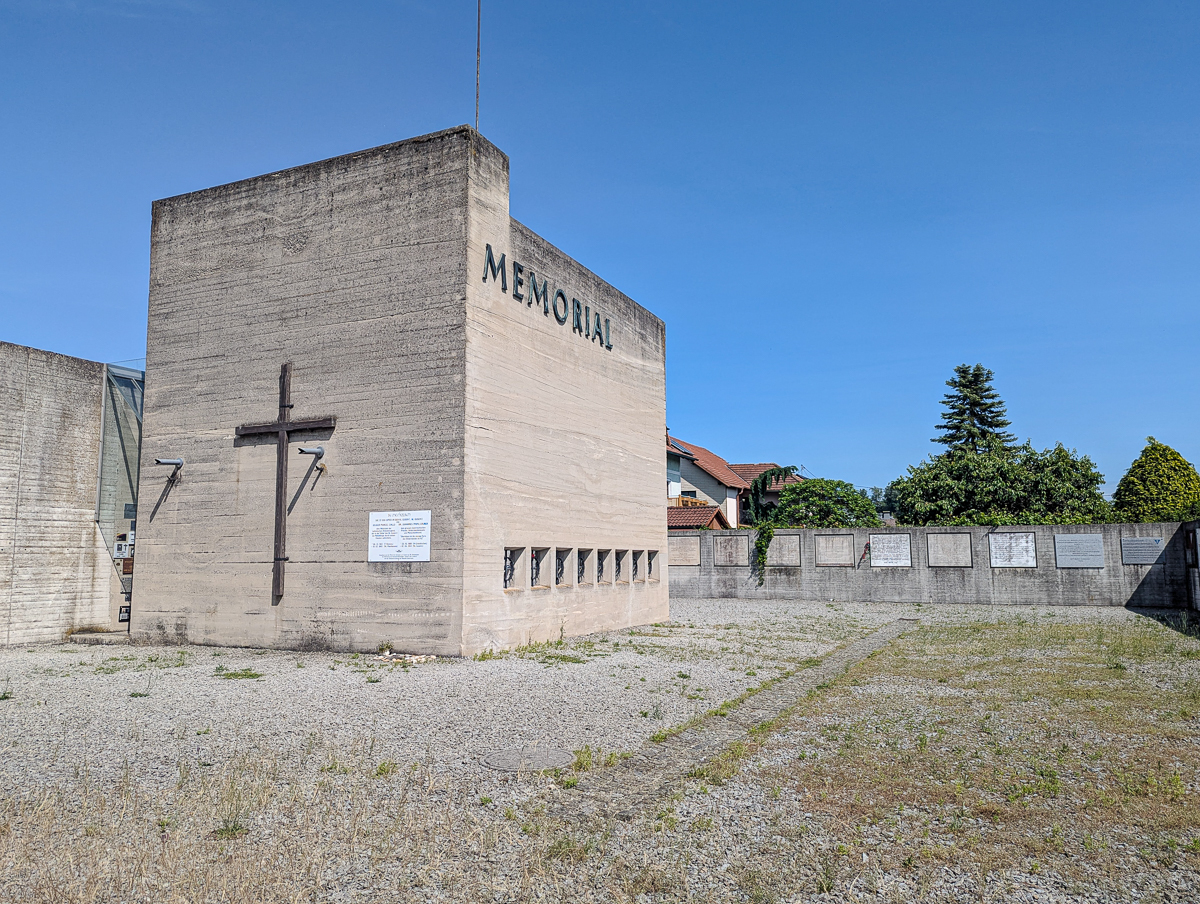
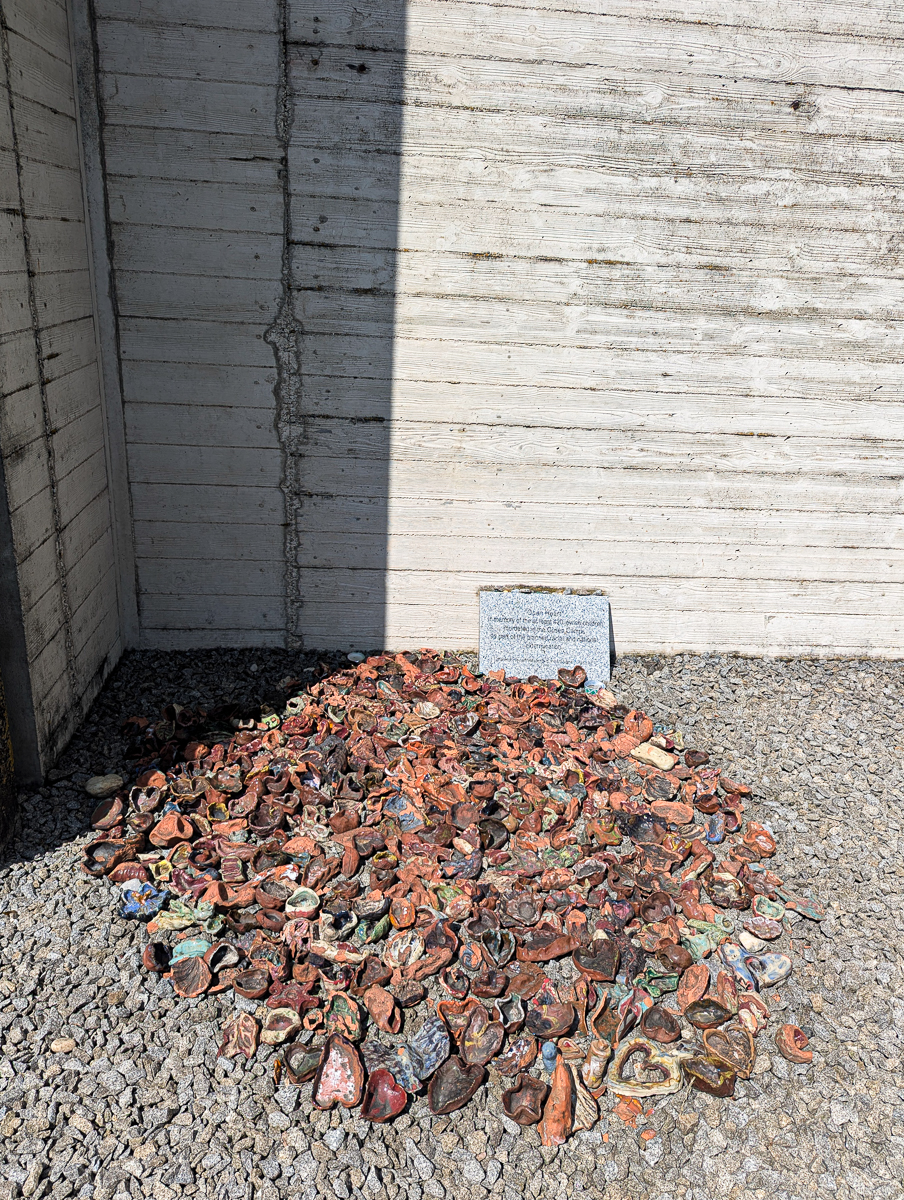
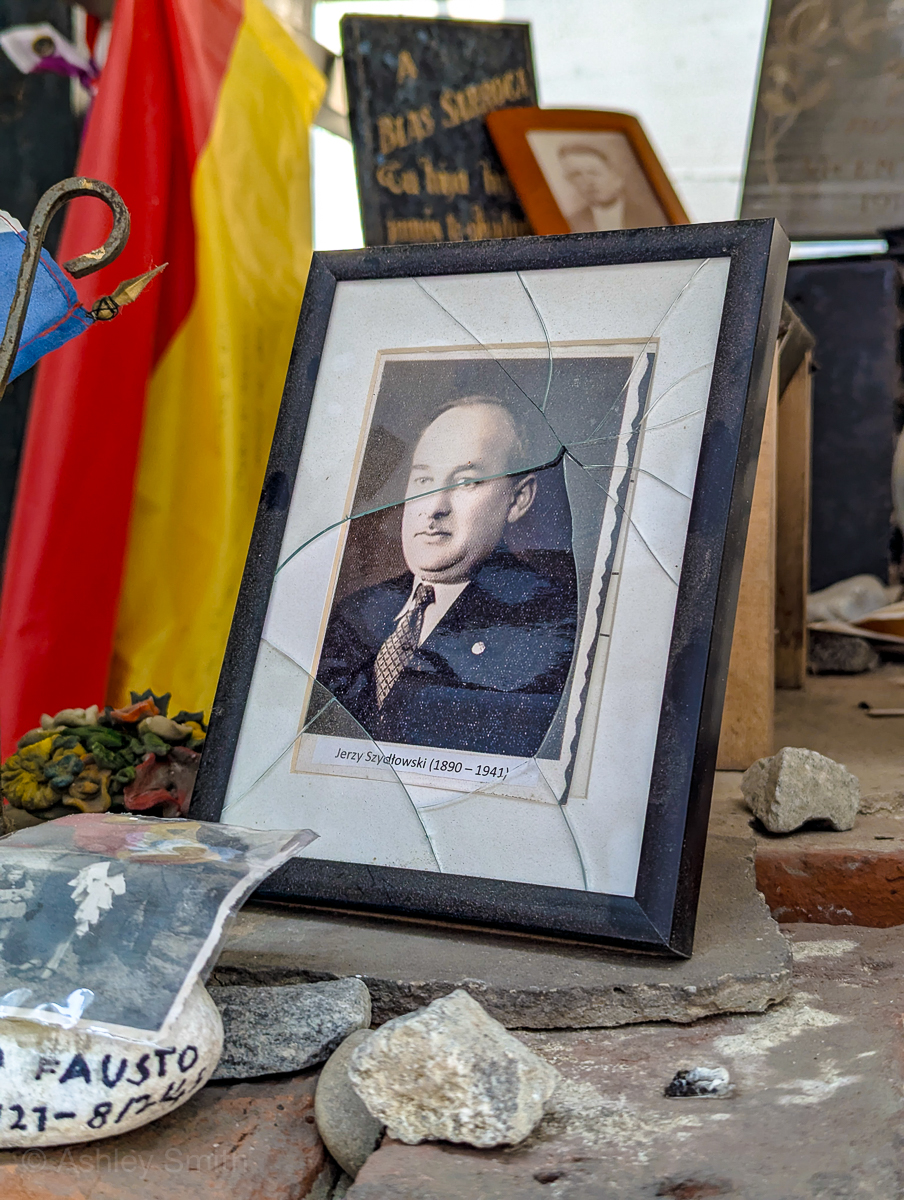
Other sites and original structures
Like at Mauthausen, you can download a virtual guide to visiting Gusen that has tons of related historical sites in the area. For example, a short drive (or even walk) down the road and you’ll be able to see some of the camp’s original buildings like:
- SS utility building
- SS guard building
- Remains of the SS Officers’ club
- And other structural ruins that are currently being excavated
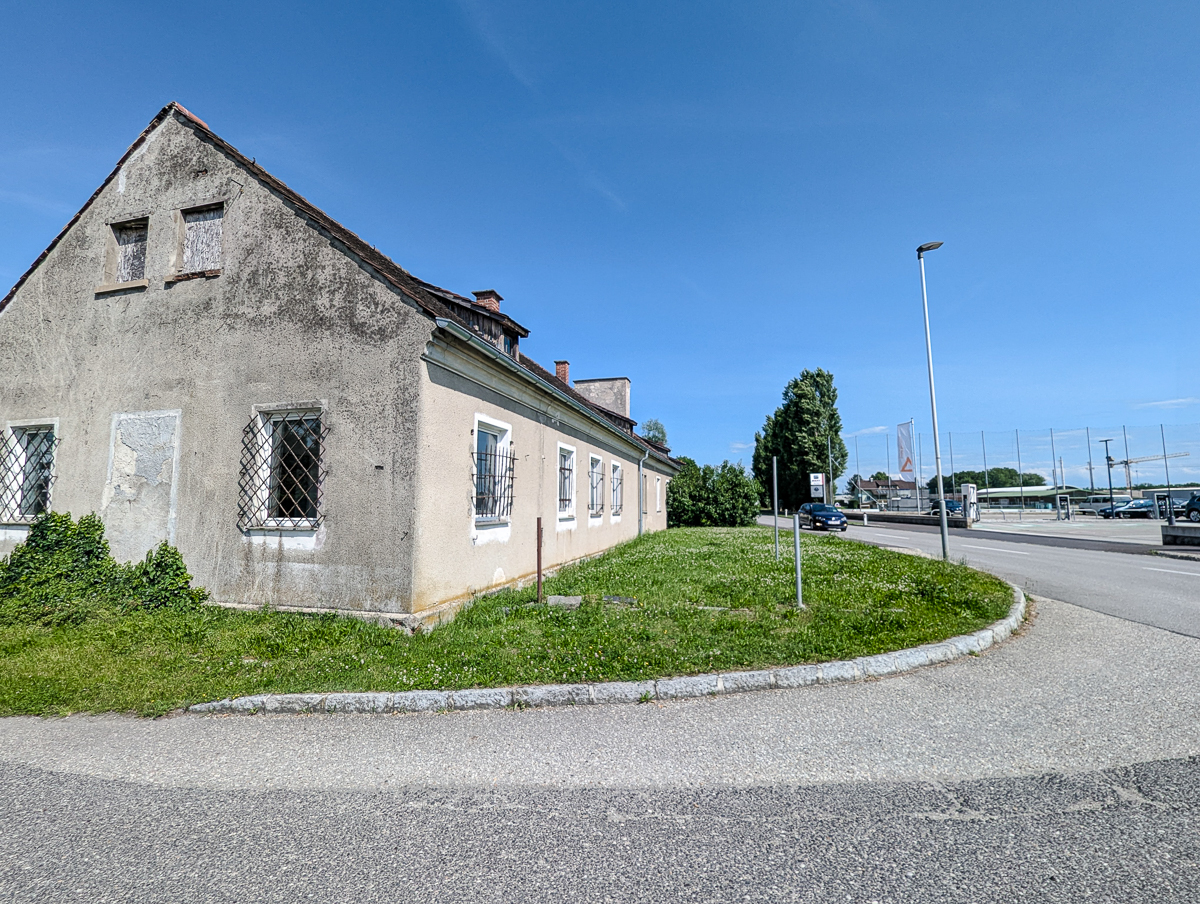
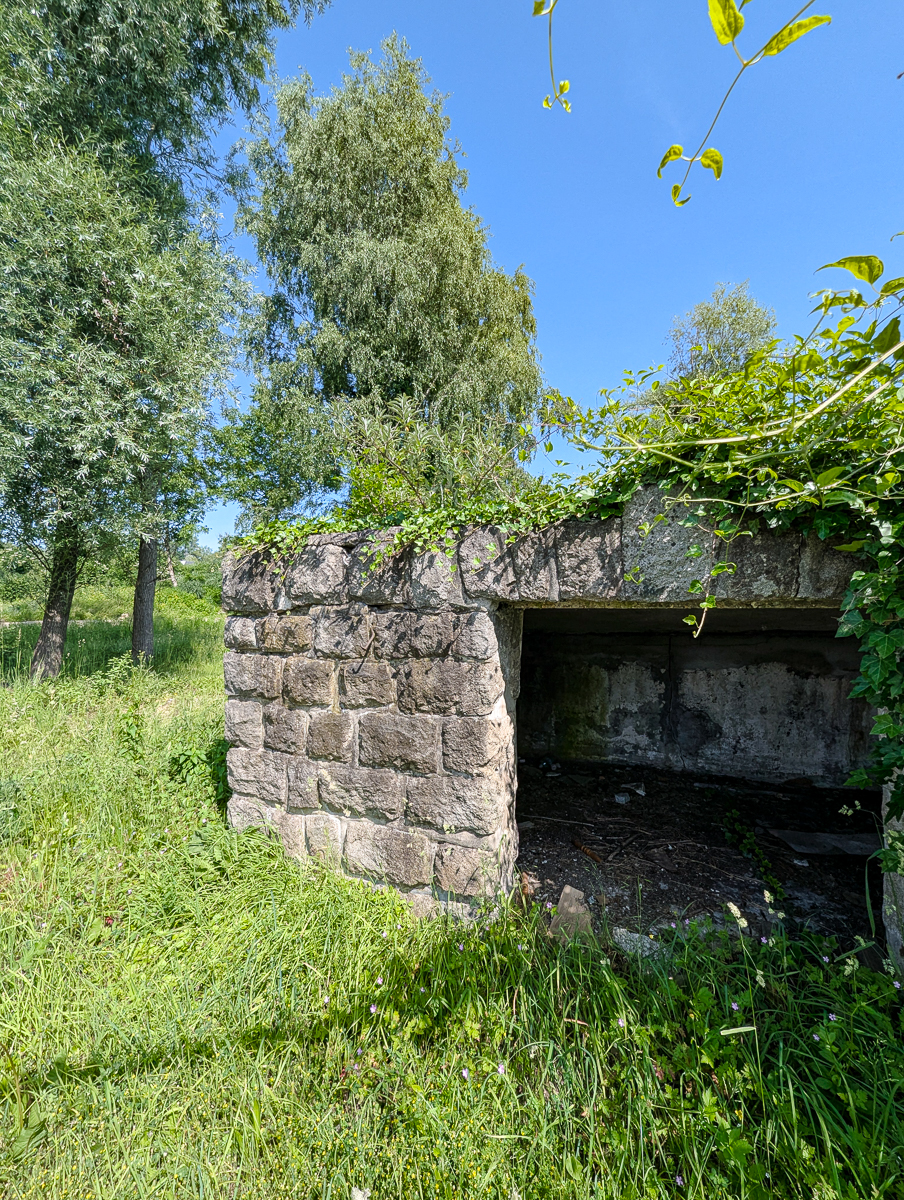
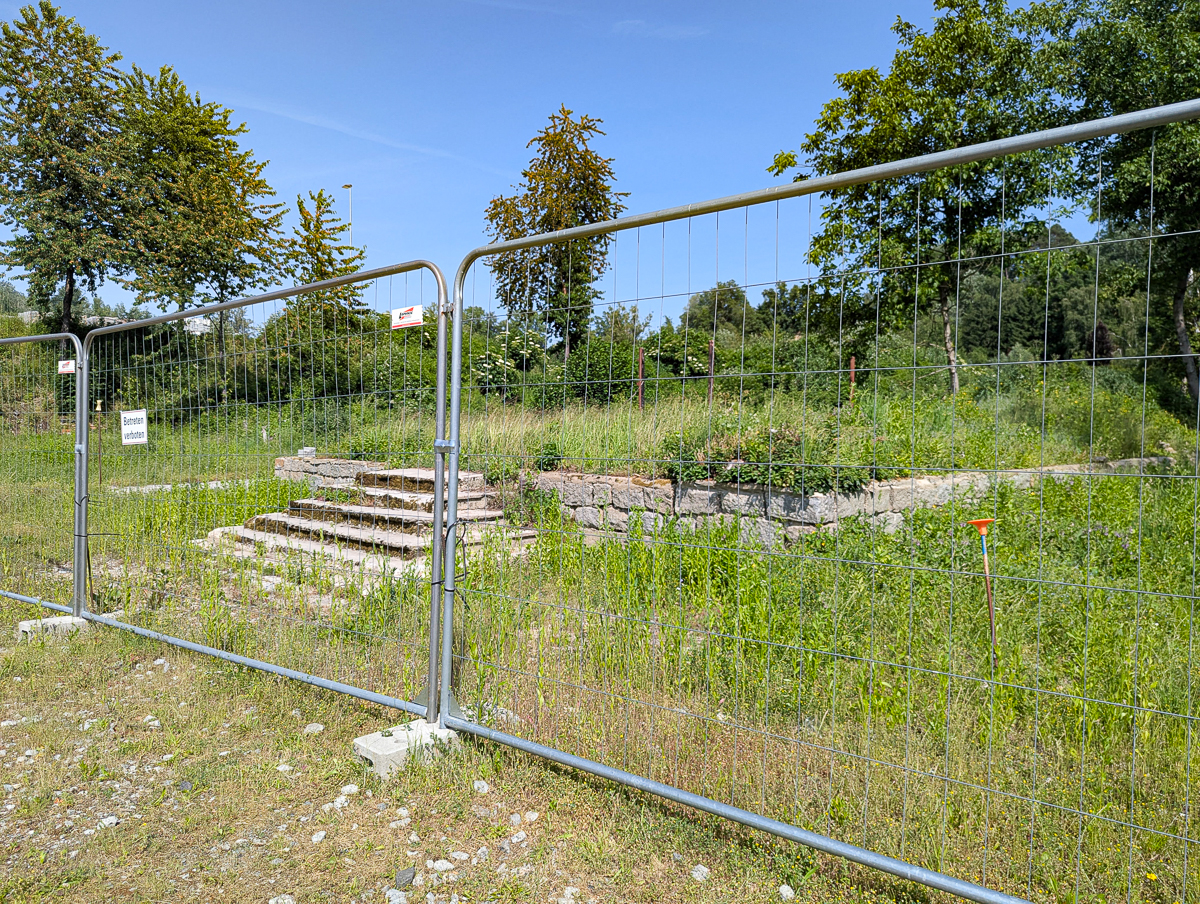
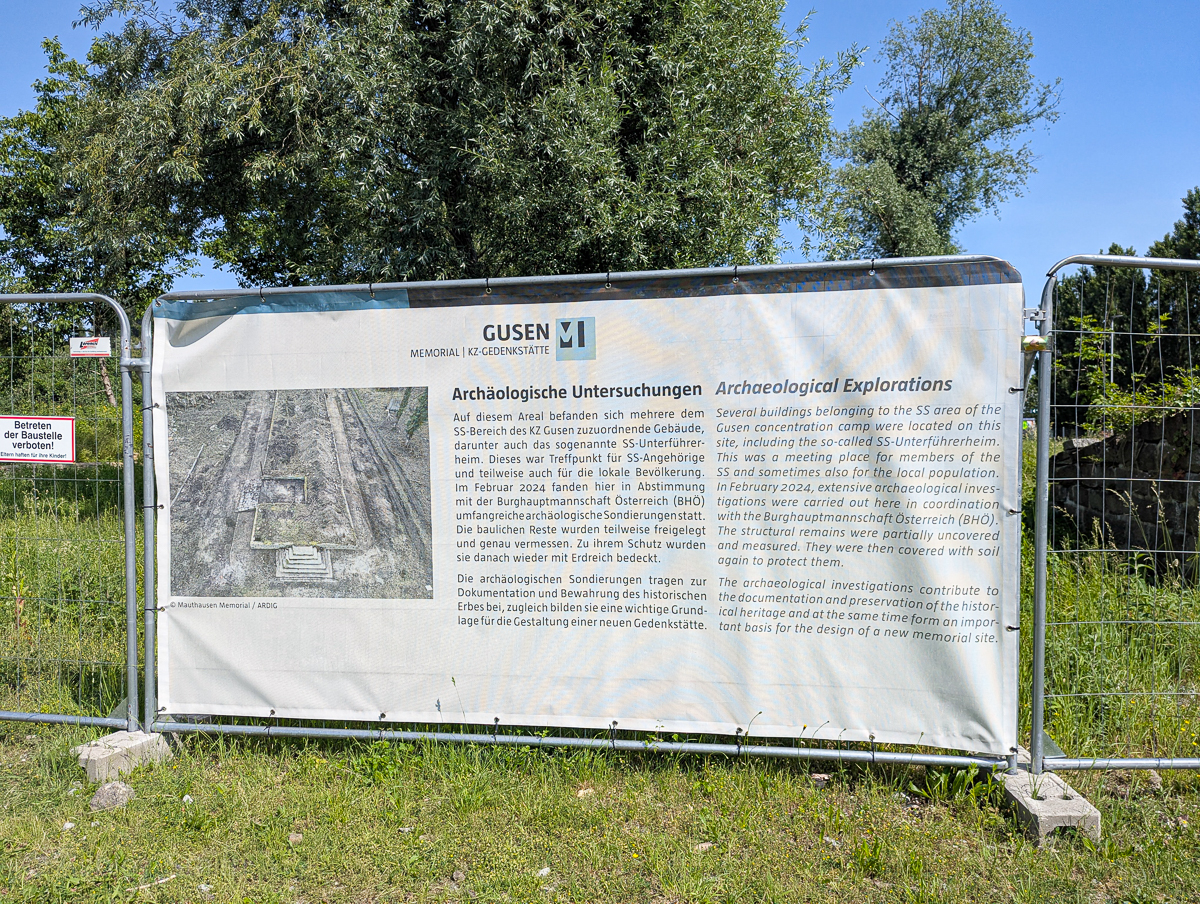
The Jourhaus
One crazy thing you’ll learn while visiting Gusen is what happened to the camp’s main gate house (the Jourhaus). This was the large building with an arch that acted as the entrance gate into the camp that so many concentration camps had. It was also where the camp Commandant typically lived and where prisoners were routinely tortured and murdered. Gusen had one too, but Gusen’s is unique.
After the war, the building changed hands several times but never really became anything substantial. That is, until a private owner purchased it and then used it to build their luxury mansion. They literally built their home around the concentration camp’s gate. They even incorporated the original stones of the gate into the design. The gate where tens of thousands of Nazi concentration camp prisoners were forcefully marched to their deaths.
I was stunned to learn this fact, but I was even more stunned when I saw it for myself. What kind of sick person builds their luxury home into a concentration camp headquarters and even includes the prisoner gate as part of the aesthetic? Sick sick sick. Understandably, the house is surrounded by a gate and tall hedges that block most of the view (but not all of it).
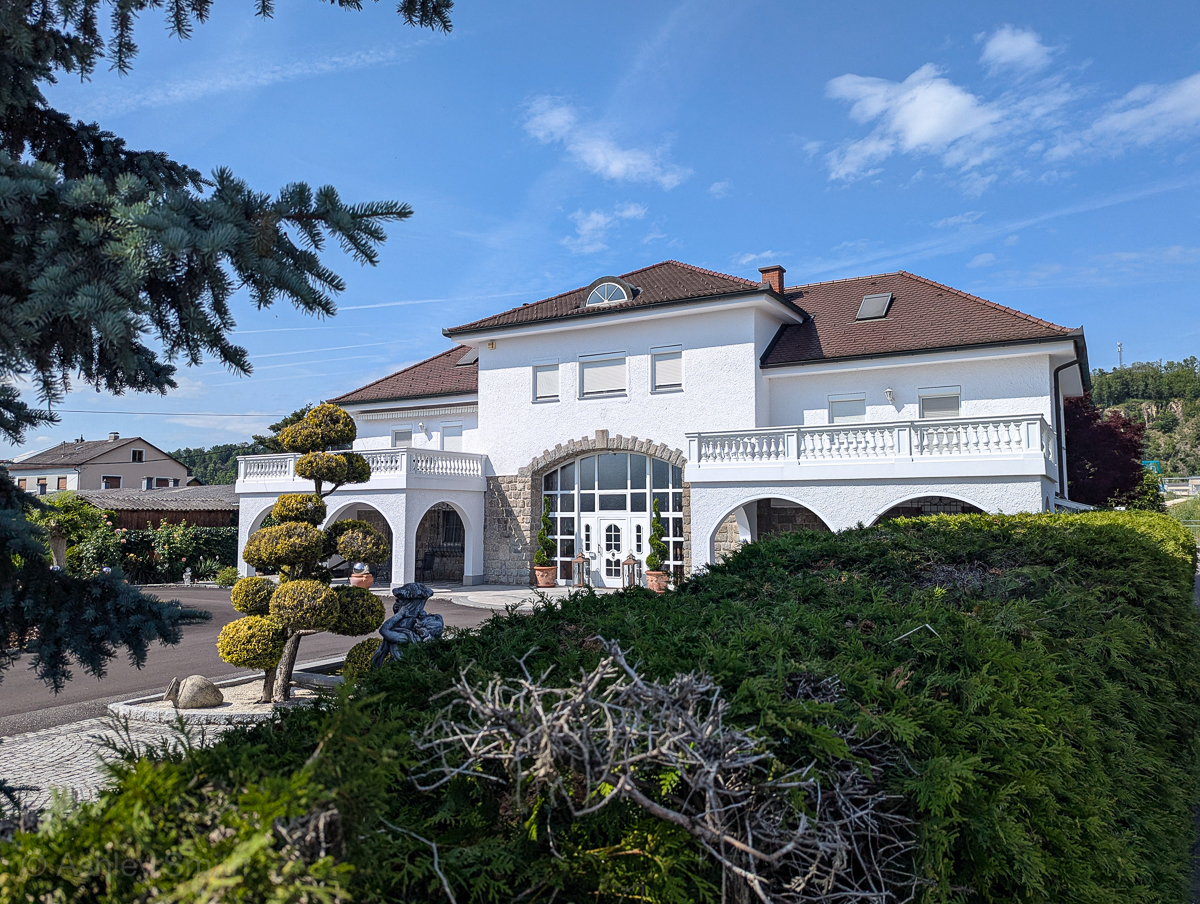
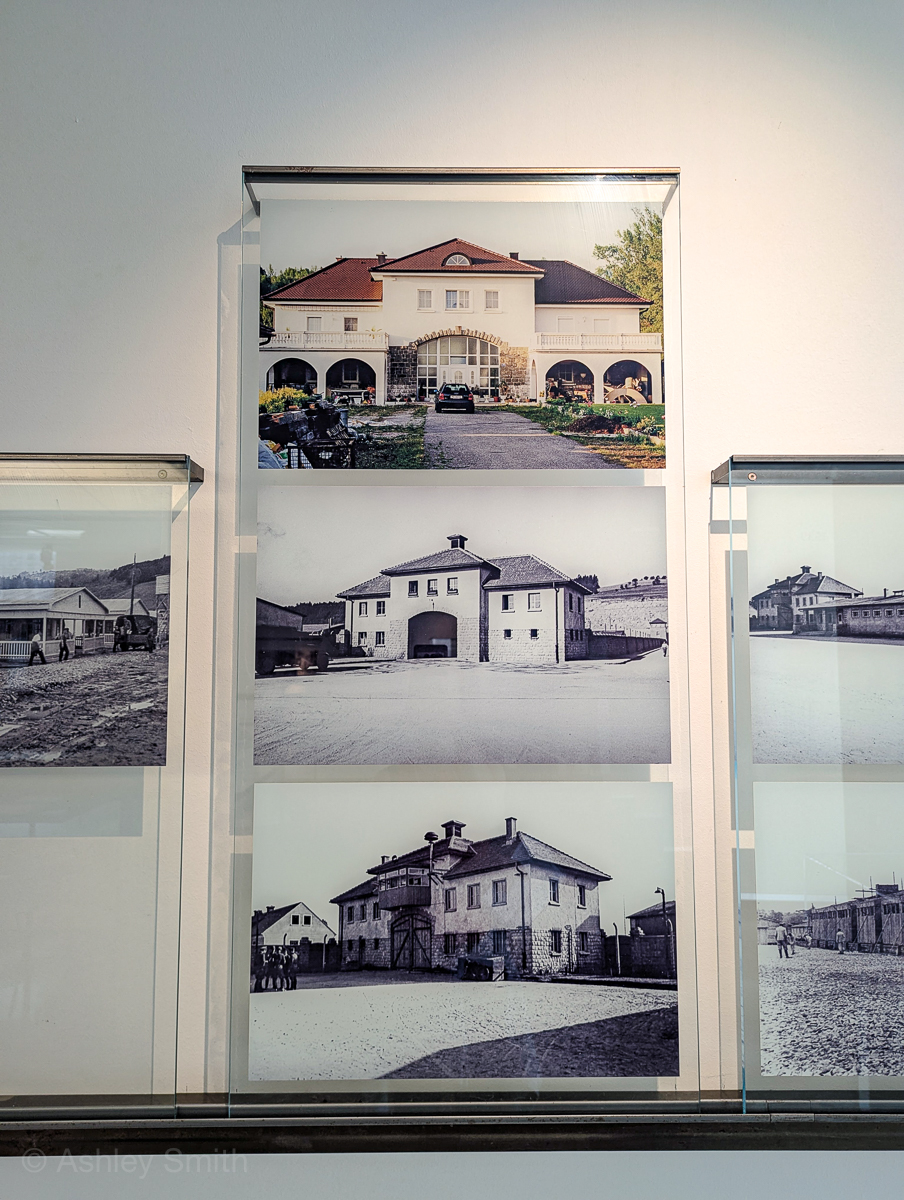
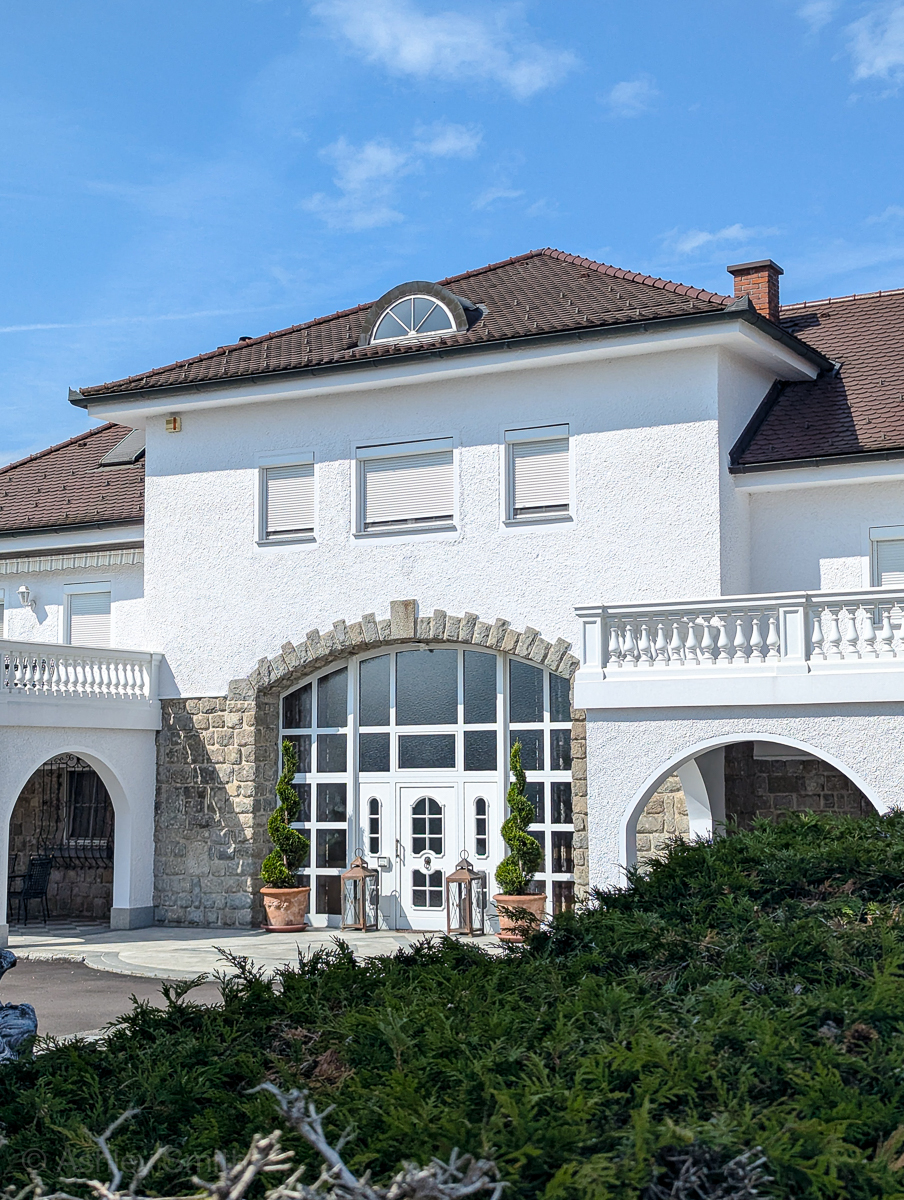
Visiting Gusen: What to expect
After parking at Gusen, follow the path along the wall and up the ramp until you enter the visitor center and museum. You can pick up a map here and a visitors’ brochure as well as download the virtual guide if you haven’t done so already. Make the loop around the museum, then head back outside to the crematorium memorial area.
There may or may not be anyone on-site inside the visitor center. If you have questions and there’s no one here, the people at Mauthausen can probably help. To visit the other sites in the area you’ll either need to walk or drive to them. At the SS buildings, there’s a gravel parking lot where you can stop.
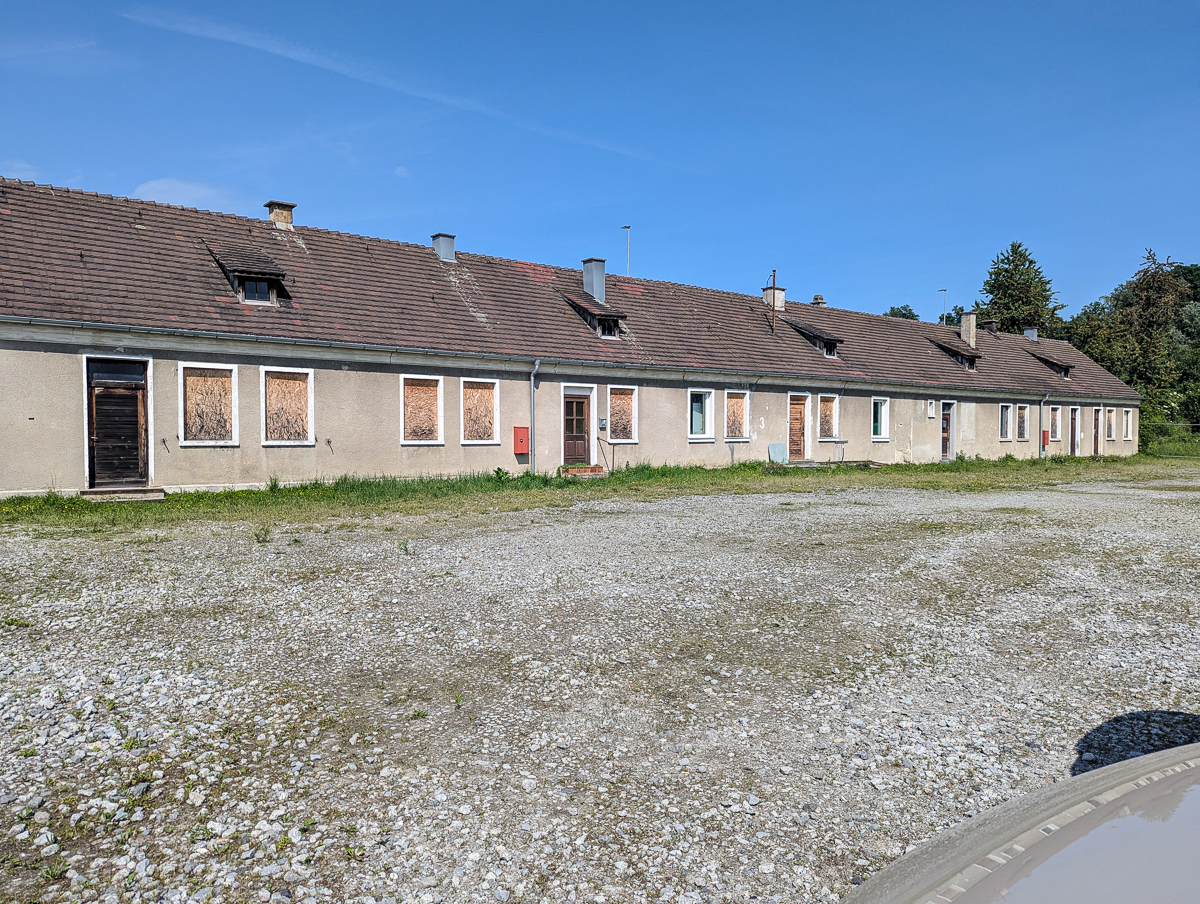
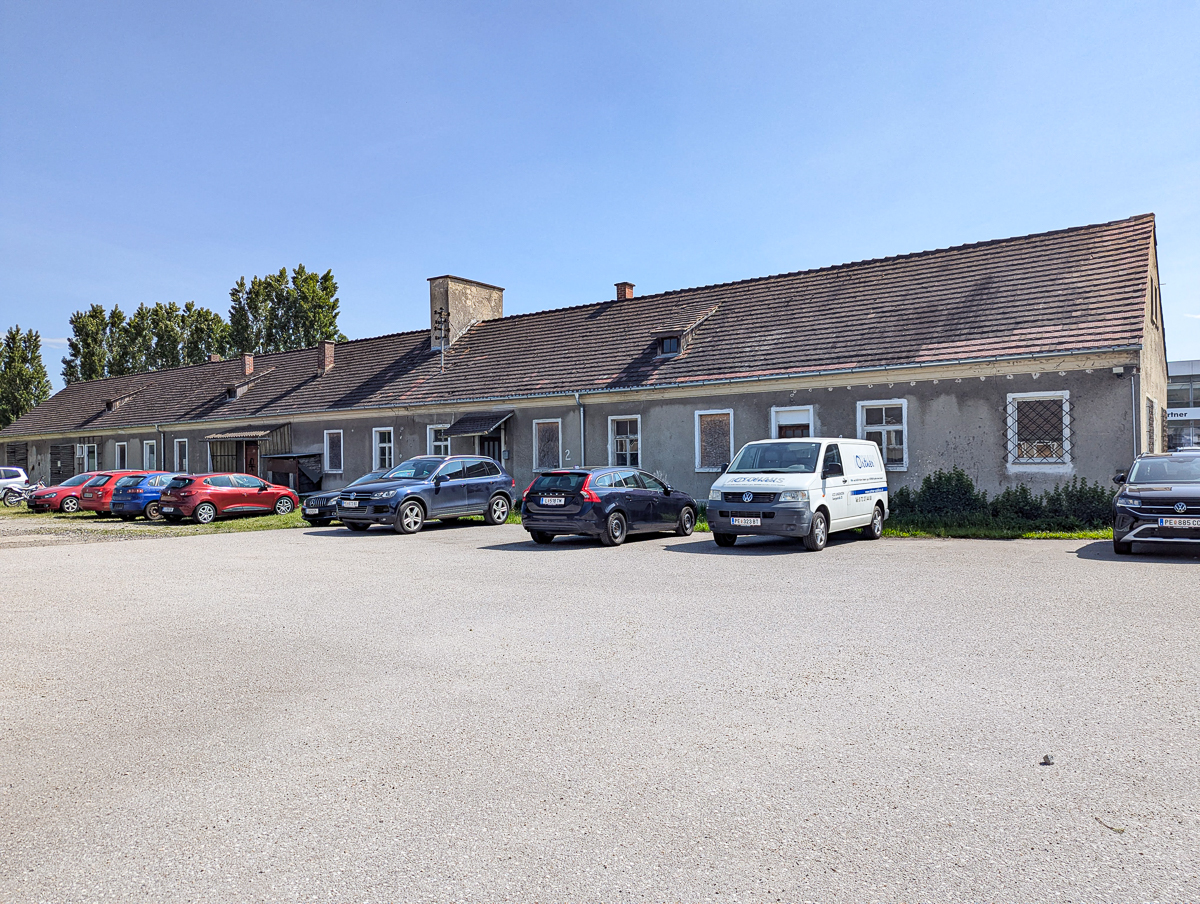
What you need to know for visiting Gusen
Visiting Gusen is quick and straightforward, but here are a few things to know before you go.
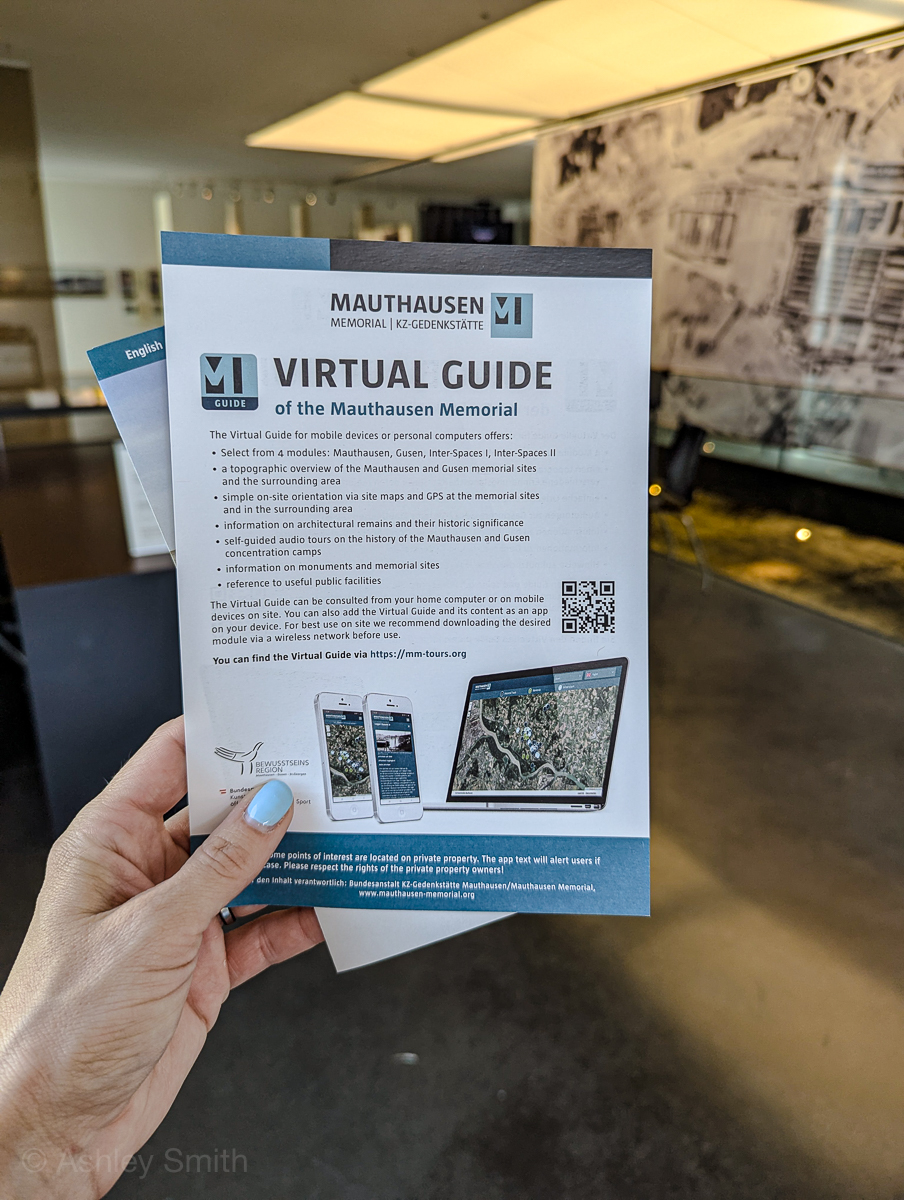
Visiting Gusen: Essential information
Here’s the most basic information you need to plan your trip to Gusen Concentration Camp Memorial Site:
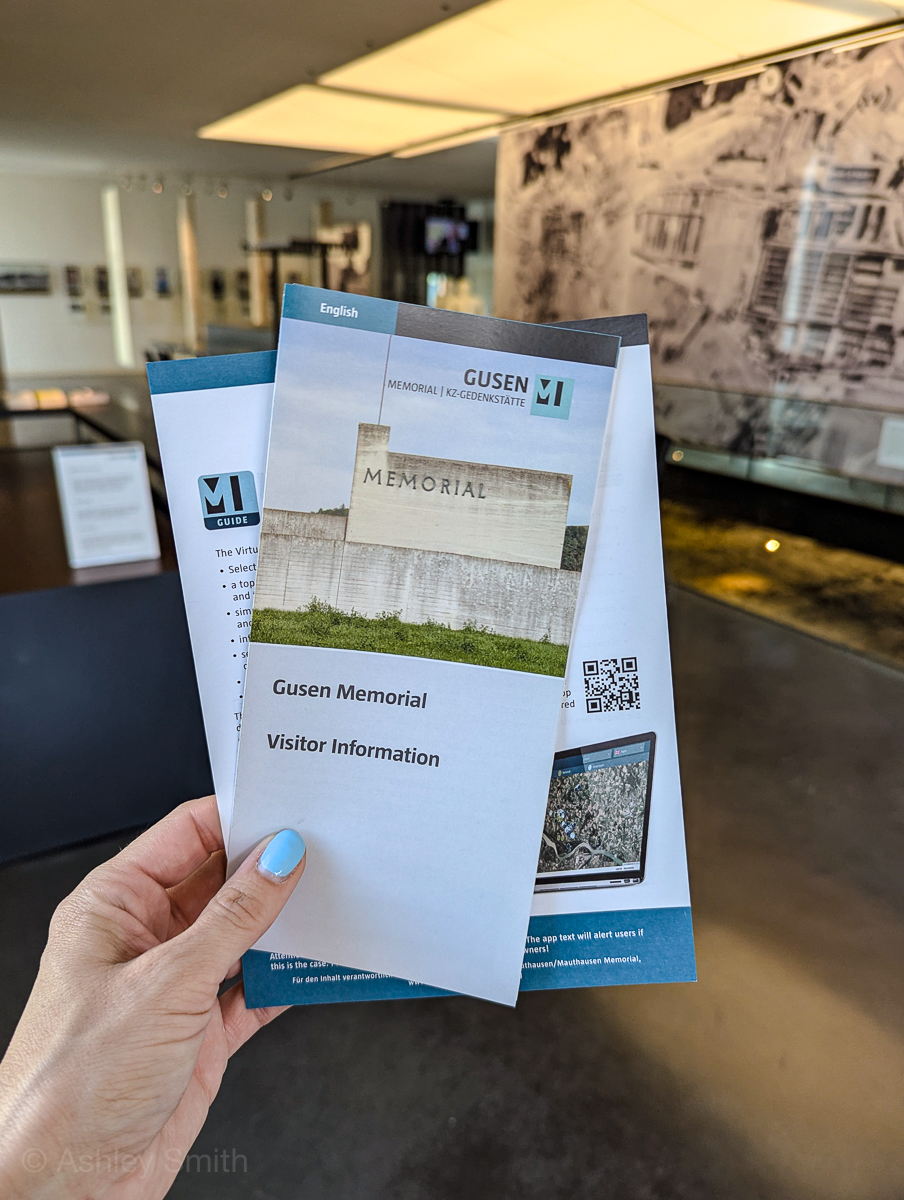
Accessibility at Gusen
The Gusen website doesn’t explicitly mention anything about accessibility but you can contact them directly for details. (Contact info on the main page of their website.)
From my own observations, the visitor center and museum appear to be wheelchair accessible, with a large ramp at the entrance. The walking paths and the memorial area are gravel and the crematorium area is covering in paving stones. Do with that information what you will.
As far as non-wheelchair-specific accessibility goes, you’ll have to contact them directly for more info.
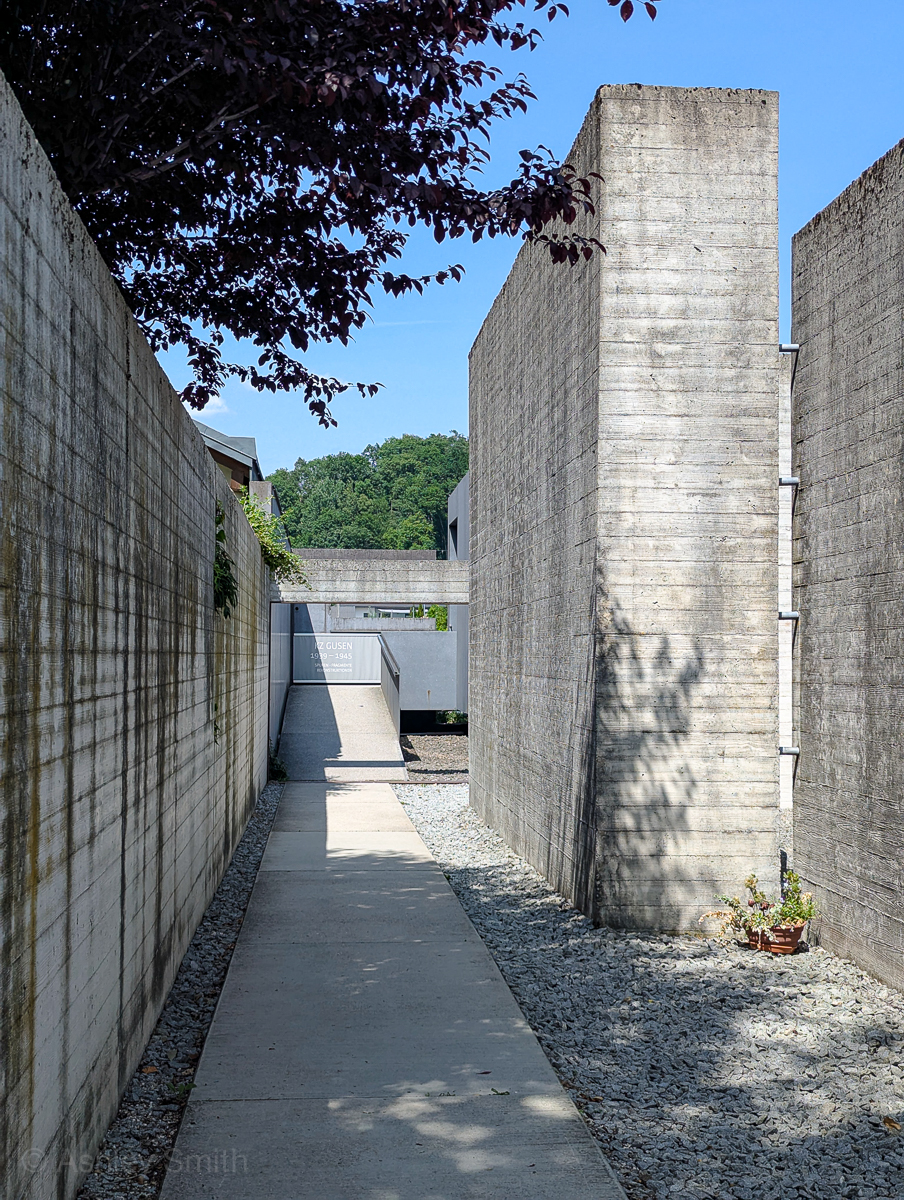
Where to stay for visiting Gusen
Linz is going to be the best place to stay for visiting Gusen. It’s a (small) major city with plenty of things to do, places to eat, shops and markets, and more. Here are a few quick hotel suggestions:
You can see all available Linz hotels here.
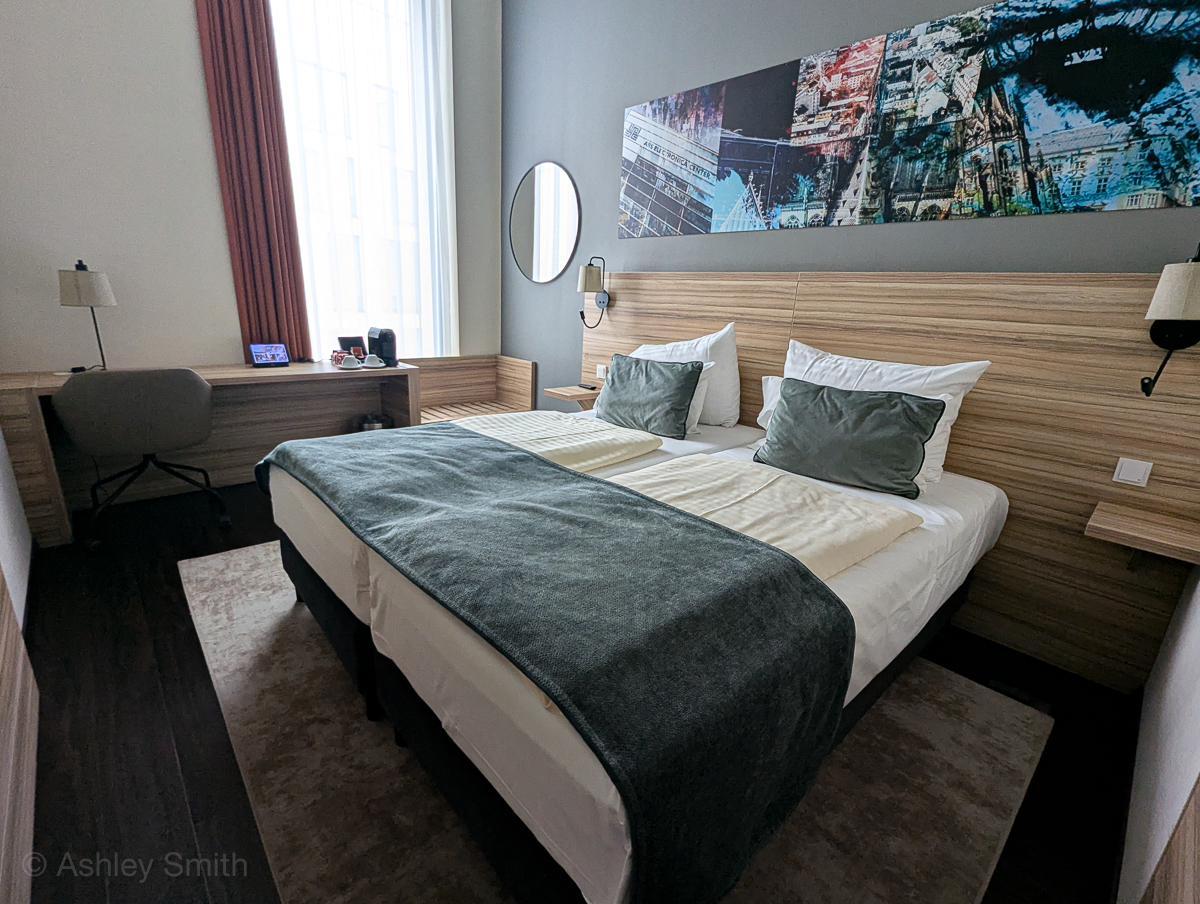
More info for your Austria trip
- Hotels: Find great places to stay on Booking.com (my go-to). Expedia and Hotels.com are worth checking too. VRBO is best for apartment rentals.
- Rental cars: Check out the best rental car deals here.
- Local tours & activities: Check out all the great local options from Viator and Get Your Guide here.
- Don’t forget an Austria guidebook and this must-have Austria customs and culture guide!
- Want more? See all my Austria posts here.
Like this post? Have questions about visiting Gusen concentration camp? Let me know in the comments below. Thanks for reading.

Save this info, pin this image:
